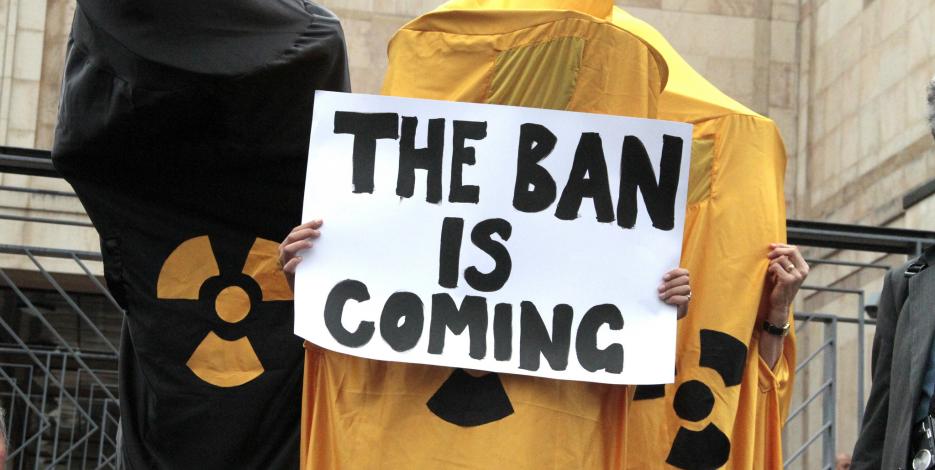Beyond the Ban: The humanitarian initiative of nuclear disarmament and advocacy of no-first-use nuclear doctrines
Deep dissatisfaction with the lack of progress in multilateral nuclear disarmament has led a large number of states within the international community to participate in a process to highlight the humanitarian impacts of nuclear weapons. The immediate origins of the so-called humanitarian initiative can be traced back to the consensus final document of the 2010 Review Conference (RevCon) of the Nuclear Non-Proliferation Treaty (NPT). States agreed on language which, for the first time in the history of the nuclear non-proliferation regime, explicitly highlighted ‘the catastrophic humanitarian consequences that would result from the use of nuclear weapons’. Since then, a large number of states and NGOs have convened regularly to discuss the nature and extent of those consequences and their implications for the future of nuclear weapons policies.
The conferences on the humanitarian impact of nuclear weapons in Oslo, in 2013, and in Nayarit (Mexico) and Vienna the following year, as well as the UN-mandated Open-Ended Working Groups (OEWG) of 2013 and 2016 (the latter still under way), show the humanitarian initiative’s evolution. One of its most relevant aspects is the gradual narrowing down of policy options towards a focus on the negotiation and adoption of a binding international treaty banning nuclear weapons. In his capacity of chair of the Nayarit conference, the Mexican delegate, ambassador Juan Manuel Gómez Robledo, surprised attendees by concluding in his closing summary that the discussions there and in Oslo ‘should lead to the commitment of States and civil society to reach new international standards and norms, through a legally binding instrument’. That same year, at the Vienna conference, the Austrian government unilaterally pledged to ‘identify and pursue effective measures to fill the legal gap for the prohibition and elimination of nuclear weapons’.
Over time, 127 states officially endorsed the Austrian pledge, now referred to as the ‘Humanitarian Pledge’. This process culminated in December 2015 with the adoption of the pledge by the General Assembly of the United Nations (UNGA) through Resolution 70/48. While 139 states voted in favour, there were 29 votes against and 17 abstentions coming from nuclear-armed states and their allies. The focus on the ban has also become apparent at the level of the OEWG: while in 2013 the ban was seen as one of the ‘elements necessary for maintaining a world without nuclear weapons once achieved’, at the first session of the 2016 OEWG the ban was increasingly being portrayed ‘as the most feasible, practical, and effective way forward in the current context’. It seems likely that negotiations towards a ban on nuclear weapons and the eventual adoption of such an instrument would contribute to achieving the goal of nuclear disarmament. This would be the case even if all states possessing nuclear weapons and their formal allies refuse to participate in the near to medium term. But its impact will be limited and a great deal of work would still be needed in pursuing other parallel or subsequent routes involving the nuclear armed states. One such option could be to push for the adoption of a pledge not to use nuclear weapons first. This paper explains the logic behind the ban proposal and why it requires other steps towards effective elimination of nuclear arsenals. Under the lens of state-based sources of nuclear danger, this paper investigates what a credible no-first-use (NFU) pledge is, how it affects nuclear policies, and then makes the case for applying the humanitarian paradigm to advocate for NFU.
Click the PDF link below to read the report.
This report has been prepared as part of a research internship at the British American Security Information Council (BASIC) funded by the European Union (EU) Non-Proliferation Consortium as part of a larger EU educational initiative aimed at building capacity in the next generation of scholars and practitioners in nonproliferation policy and programming. The views expressed in this paper are those of the author and do not necessarily reflect those of BASIC, the EU Non-Proliferation Consortium or other members of the network.

